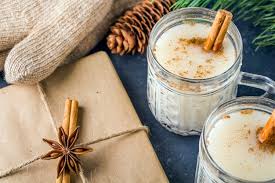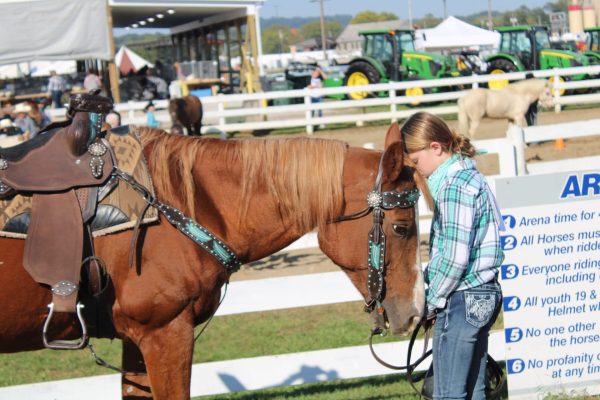The Origins of Eggnog

Eggnog, love it or hate it, is a Christmas staple. The smooth, creamy beverage remains a tradition for many families around the world. Thus, an excellent question arises: Where did eggnog come from?
It is believed that eggnog originates from the English drink “posset,” which is essentially a mix of warm ale, milk, and spices. The alcohol and spices were added in order to prevent the drink from spoiling, as well as to provide extra flavor. Though a variety of alcohols were used, sherry became the most popular alcohol to add to the drink in the 1600s. The use of expensive alcohols like sherry and ingredients like eggs and milk symbolized the prosperity and wealth of those who could afford the drink. Posset was also believed to be more than a rich man’s drink. The 1600s Englishmen believed the drink could cure illnesses such as colds.
Posset did not begin its transformation into eggnog until it spread around the world. When the English monks got a hold of the drink, they added eggs and figs to the recipe. As the creamy craze made its way across the pond, the colonists made their mark. Due to the scarcity of traditional and expensive posset liquors, such as sherry, the Americans utilized whiskey or rum. Today, traditional recipes for eggnog in the United States call for eggs, sugar, milk, cream, and any type of alcohol. However, the story does not end there. The beverage underwent more adaptations in Latin America. Puerto Ricans added coconut milk and ditched the eggs in order to create coquito, a popular alcoholic beverage for Christmastime. Mexicans mixed tasty vanilla and cinnamon with rum to produce rompope. Thus, what once was posset, a medieval drink for the rich in England, became eggnog, coquito, and rompope, drinks for families to bond over at their Christmas celebrations.
We consider eggnog a seasonal drink, most popular around Christmas. So what makes this beverage a Yuletide special? In medieval Britain, posset was enjoyed mainly during the winter because of its appealing warmth. Eggnog, coquito, and rompope were also popular for that same reason. By the 1700s, the drink had become a Christmastime necessity for many households around the United States. Today, loving families around the world enjoy their own variations of eggnog to celebrate the holiday season.

Grace Rivera is a senior and second year member of Crimsonian. She is a Class Officer, a Club of International Awareness member, a Camp Imagine If tutor,...





